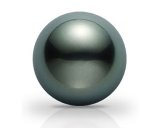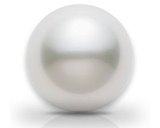Pearls
Freshwater Pearls
Freshwater pearls are cultured in freshwater mussels, primarily from China. Their wide variety of unique shapes, colours and sizes, combined with their attractive prices, make them a pearl buyer’s favourite!
-Typical sizes range from 4-13mm and occasionally 14-16mm
-Naturally coloured pink, peach, cream and white.
-Available in a huge range of enhanced/dyed colours
- Diversity of shapes including round, drop, button and baroque

Cultured Akoya Pearls
Ayoya pearls are cultured inside an oyster in the saltwater around Japan. They are typically creamy-white and round in shape and are thought of as ‘classic pearls’, often with a beautiful lustre.
-Typical sizes ranging from 3-9.5mm and occasionally up to 10mm
-Naturally coloured white, light gold and cream, often with a brilliant pinkish lustre
-Most commonly found in round shape and different levels of round-baroque
-Regarded as relatively rare compared to Freshwater pearls

South sea pearls
South Sea Pearls, as the name suggests, are grown in the South Pacific Seas. They are cultured in oysters and are considered the rarest and most valuable of pearls. South Sea Pearls are available in three main colours of varying tones; Black, White and Golden
South Sea Black Pearls (Tahitian)
-Grown in a black-lipped oyster from Tahiti through to the Cook Islands
-Sizes range from 8-18mm, most commonly 8-14mm
-Naturally coloured, South Sea Black Pearls occur in many exotic tones varying from creamy white/grey, regal greens, iridescent peacock to deep black.
- Available in varying shapes including round, semi-round, baroque, drop and oval
- Regarded as very rare and valuable.

South Sea White Pearls
-Grown in oysters off the coast of north-west Australia
-Typical sizes range from 8-20mm, most commonly 10-15mm
-Naturally coloured white, with a soft and luxurious lustre
-Shapes vary from round, semi-round, baroque, button and drop. Although only a small percentage are truly spherical
-Regarded as extremely rare and valuable, especially in larger true round gems

South Sea Golden Pearls
-Grown in gold-lipped oysters around Indonesia and the Philippines
-Sizes range from 9-20mm, most commonly 10-14mm
- Colours range from light cream through to the rare deep gold
-Like other South Sea Pearls the shapes vary from round, semi-round, button, baroque
-Regarded as very rare

New Zealand Blue Pearls
New Zealand Blue Pearls are cultivated in the saltwater molluscs know as Paua. The pearls take on the colours and lustre of the Paua’s shell, producing pearls reminiscent of the Paua itself.
-Cultivated as a mabe/blister pearl, meaning that they are a half pearl not fully spherical
-Known for their diversity of vibrant colours ranging from blue and green through to gold and pink.
-Because the pearls take their colour from the Paua they are grown in, each pearl is individually unique.
-Sizes range from 7-21mm although larger sizes are rare

Pearl Care
Pearls are an organic gemstone and need special care to retain their lustre and brilliance. With proper care pearls can remain looking their best for generations.
-Pearls should always be put on last and taken of first when dressing and undressing. This reduces the risk of damage caused by perfume, hair spray and other cosmetics.
-Store pearls separately from other jewellery to avoid the risk of scratching the surface against other gems
-Occasionally clean pearls with a soft cloth to remove any body oils and harsh chemicals that have come into contact with the pearls.
-Do not leave pearls in intense sunlight for prolonged periods of time.
-If worn often, it is good to have strings rethreaded every year or so, as the thread can weaken over time and become discoloured.
 Click here for more pearl information
Click here for more pearl information